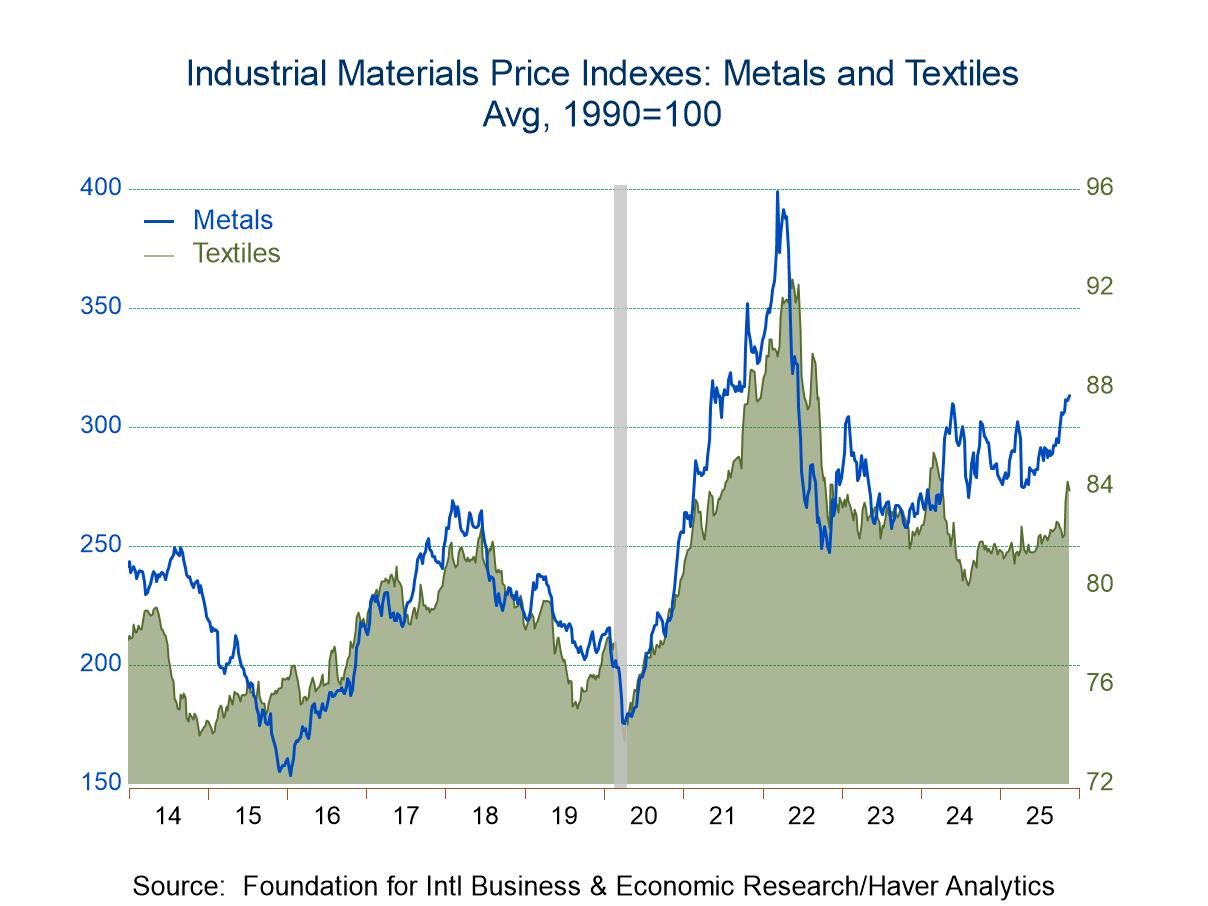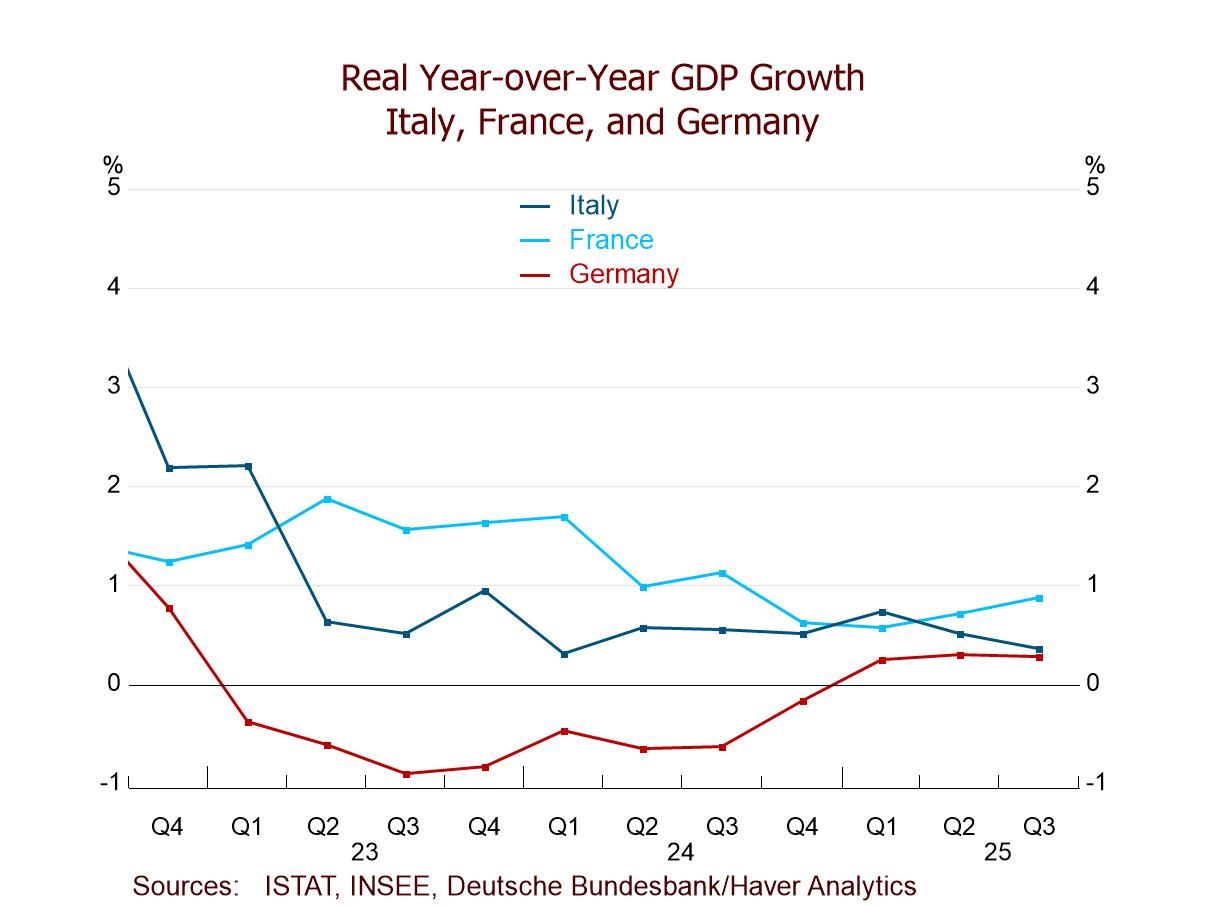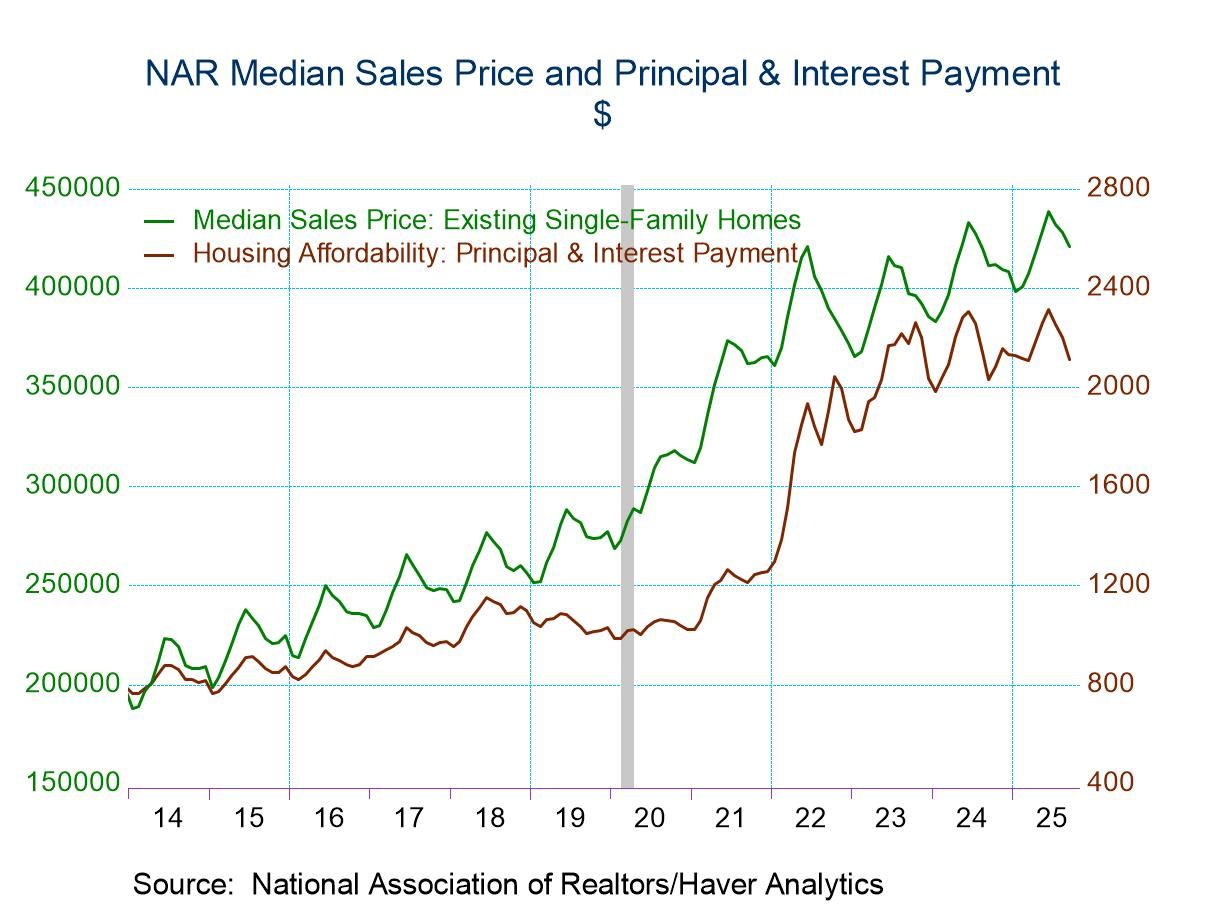Chicago Fed National Activity Index Turns Negative in October
by:Tom Moeller
|in:Economy in Brief
Summary
- Becomes the first below-zero reading since June.
- Three-month average weakens.
- Component movement is mixed.


The Federal Reserve Bank of Chicago reported that the Chicago Fed National Activity Index (CFNAI) fell to -0.05 in October after rising to 0.17 in September, revised from no change. The August reading of 0.14 was revised from 0.10.
The index's three-month moving average fell to 0.09 in October after rising to 0.19 in September. The figure remained down from a recent high of 0.48 in December, 2021. During the last 10 years, there has been an 85% correlation between the change in the Chicago Fed Index and quarterly growth in real GDP.
Production & Income dropped to -0.05 last month and marked the third consecutive figure below zero. It remained below this year's high of 0.32 in February. The Employment, Unemployment & Hours component weakened to -0.02 from 0.10 in September. It was the second negative figure in three months, down from a high of 0.33 in February. Sales, Orders and Inventories declined to -0.01 from +0.07 in September. The Personal Consumption & Housing index improved to 0.03 and reversed its September decline.
The diffusion index, which measures the breadth of movement in the component series, fell to 0.13 during October from 0.25 in September. These readings compare to a low of -0.13 in June. Forty-five of the components contributed positively to the October index while 40 contributed negatively.
The CFNAI is a weighted average of 85 monthly indicators of national economic activity. It is constructed to have an average value of zero and a standard deviation of one. Since economic activity moves toward trend growth rate over time, a positive index reading corresponds to growth above trend and a negative index reading corresponds to growth below trend. The CFNAI was constructed using data available as of November 17, 2022. October data for 50 of the 85 indicators had been published at that time. For all missing data, estimates were used in constructing the index.
The index is constructed by the Federal Reserve Bank of Chicago. These figures are available in Haver's SURVEYS database.
Tom Moeller
AuthorMore in Author Profile »Prior to joining Haver Analytics in 2000, Mr. Moeller worked as the Economist at Chancellor Capital Management from 1985 to 1999. There, he developed comprehensive economic forecasts and interpreted economic data for equity and fixed income portfolio managers. Also at Chancellor, Mr. Moeller worked as an equity analyst and was responsible for researching and rating companies in the economically sensitive automobile and housing industries for investment in Chancellor’s equity portfolio. Prior to joining Chancellor, Mr. Moeller was an Economist at Citibank from 1979 to 1984. He also analyzed pricing behavior in the metals industry for the Council on Wage and Price Stability in Washington, D.C. In 1999, Mr. Moeller received the award for most accurate forecast from the Forecasters' Club of New York. From 1990 to 1992 he was President of the New York Association for Business Economists. Mr. Moeller earned an M.B.A. in Finance from Fordham University, where he graduated in 1987. He holds a Bachelor of Arts in Economics from George Washington University.






 Global
Global